
CLINICAL EEG AND NEUROSCIENCE
Scope & Guideline
Unlocking the Mysteries of Neurological Disorders
Introduction
Aims and Scopes
- Clinical Applications of EEG:
The journal emphasizes the clinical utility of EEG in diagnosing and managing neurological disorders, such as epilepsy, traumatic brain injury, and neurodevelopmental disorders. - Neurophysiological Research:
Research on the neurophysiological underpinnings of cognitive and behavioral disorders, including studies on brain connectivity, neural oscillations, and event-related potentials. - Innovative EEG Methodologies:
The journal explores advancements in EEG technologies and methodologies, including high-density EEG, quantitative EEG (qEEG), and machine learning approaches for EEG data analysis. - Neurofeedback and Rehabilitation:
A focus on the therapeutic applications of EEG, particularly in neurofeedback for conditions such as ADHD and depression, along with rehabilitation strategies for brain injury. - Interdisciplinary Perspectives:
Encouragement of interdisciplinary research that combines EEG with neuroimaging, cognitive psychology, and clinical neuroscience to enrich understanding and treatment of brain disorders.
Trending and Emerging
- Integration of AI and Machine Learning:
There is an increasing trend toward using artificial intelligence and machine learning to analyze EEG data, improving diagnostic accuracy and personalizing treatment approaches. - Neurofeedback and Cognitive Enhancement:
Research on neurofeedback as a therapeutic tool for various conditions, including ADHD, depression, and anxiety, is gaining momentum, reflecting a broader interest in cognitive enhancement and rehabilitation. - Longitudinal Studies and Predictive Modeling:
An emerging focus on longitudinal studies that track EEG changes over time to predict clinical outcomes, particularly in neurodegenerative diseases and recovery from brain injuries. - Exploration of Comorbidities in Neuropsychiatric Disorders:
Increasing attention to the comorbidity of neurological and psychiatric disorders, with studies examining how EEG findings correlate with multiple conditions, such as anxiety, depression, and substance use disorders. - Neurophysiological Biomarkers for Mental Health:
The identification of EEG-based biomarkers for mental health disorders is a growing area of research, aiming to enhance diagnostic precision and inform treatment strategies.
Declining or Waning
- Traditional EEG Analysis Techniques:
There appears to be a waning interest in basic, traditional EEG analysis methods as researchers increasingly adopt more sophisticated and computational approaches, such as machine learning and deep learning. - Solely Descriptive Case Studies:
The journal has seen a decrease in the publication of purely descriptive case studies, moving towards more robust experimental and clinical trial designs that provide stronger evidence for clinical practice. - Focus on Single Disorder Studies:
There is a decreasing trend in studies focusing on single disorders in isolation. Instead, there is a growing preference for studies that explore comorbidities and the interplay between different neurological and psychiatric conditions. - Basic Neuroscience without Clinical Implications:
Research that does not directly translate to clinical application or lacks immediate relevance to patient care is becoming less common as the journal seeks to emphasize clinical relevance.
Similar Journals

Neurocritical Care
Shaping the future of intensive neurological care.Welcome to Neurocritical Care, a leading journal dedicated to advancing the field of neurocritical care medicine. Published by HUMANA PRESS INC, this esteemed journal boasts a commendable impact, having secured its position in the top quartile (Q1) for both Critical Care and Intensive Care Medicine as well as Clinical Neurology in 2023. Aimed at healthcare professionals, researchers, and students, Neurocritical Care serves as a vital platform for disseminating cutting-edge research, comprehensive reviews, and clinical guidelines that enhance the understanding and management of critically ill neurological patients. With a focus on high-quality, peer-reviewed content, this journal plays a critical role in shaping clinical practice and improving patient outcomes in neurocritical settings. Spanning from 2004 to 2024, its rich archive will continue to support the academic community and foster innovation in this essential area of medicine.

Brain Connectivity
Decoding the Complex Web of Neural Connections.Brain Connectivity is a premier journal dedicated to advancing the understanding of neural connections and brain function through innovative research and interdisciplinary collaboration. Published by MARY ANN LIEBERT, INC, this journal has established itself in the field of neuroscience, earning a respectable Q2 ranking in the 2023 category of Neuroscience (Miscellaneous) and a Scopus rank of 61 out of 113 in General Neuroscience. Since its inception in 2011, Brain Connectivity has been at the forefront of research on the intricate web of brain networks, exploring topics such as functional connectivity, neuroimaging, and the implications of connectivity studies for understanding various neurological disorders. Researchers, professionals, and students benefit from comprehensive access to cutting-edge studies and critical reviews, fostering a deeper appreciation of brain dynamics. As the field evolves, Brain Connectivity remains a vital resource for those aiming to contribute to our growing understanding of brain architecture and function.
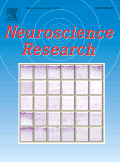
NEUROSCIENCE RESEARCH
Pioneering Research in Neural MechanismsNEUROSCIENCE RESEARCH, published by Elsevier Ireland Ltd, is a leading journal in the field of neuroscience, with a notable reputation for disseminating high-quality research that spans a variety of topics within the discipline. With an ISSN of 0168-0102 and an E-ISSN of 1872-8111, this journal serves as a vital platform for both established researchers and emerging voices in the field. Ranking in the Q2 quartile in both Medicine and Neuroscience categories, it has been recognized as a reliable source of innovative findings since its inception in 1984, with continuous publication through 2024. Although it does not currently offer Open Access options, the journal is indexed in Scopus, holding a significant position at Rank #48/113 in General Neuroscience, reflecting its contribution to advancing the understanding of neural mechanisms across various contexts. With its address anchored in Ireland, NEUROSCIENCE RESEARCH plays an essential role in bridging scientific inquiry and practical applications, making it an indispensable resource for researchers, professionals, and students dedicated to the burgeoning field of neuroscience.

JOURNAL OF CLINICAL NEUROPHYSIOLOGY
Empowering Clinicians with Cutting-Edge Research InsightsJOURNAL OF CLINICAL NEUROPHYSIOLOGY, an esteemed publication under Lippincott Williams & Wilkins, has been at the forefront of disseminating cutting-edge research and clinical advancements since its inception in 1984. With an ISSN of 0736-0258 and an E-ISSN of 1537-1603, this journal serves as a vital resource for professionals and researchers in the fields of medicine, neurology, and physiology, consistently maintaining its prestigious Q2 ranking in various categories as of 2023. It holds a significant position in Scopus rankings, particularly in Clinical Neurology and Physiology, providing insights that are essential for clinicians, neurologists, and scholars alike. Although it does not currently offer open access, it remains a crucial platform for advancing knowledge and practice in clinical neurophysiology. The journal not only aims to foster a deeper understanding of neurophysiological methods and their clinical applications but also encourages innovative research that addresses current challenges in the field. By bridging theory and practice, the JOURNAL OF CLINICAL NEUROPHYSIOLOGY plays an indispensable role in enhancing the quality of patient care and advancing the science of neurology.
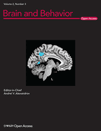
Brain and Behavior
Pioneering the Future of Behavioral Neuroscience.Brain and Behavior is a premier open-access journal published by WILEY, dedicated to advancing the field of Behavioral Neuroscience. With its ISSN 2162-3279, the journal has established itself as a vital resource for researchers, professionals, and students alike, fostering the dissemination of cutting-edge research since its inception in 2011. Renowned for its rigorous peer-review process, it enjoys a commendable Q2 ranking within the field, reflecting its impactful contributions and relevance in the scientific community. The journal not only emphasizes innovative studies that bridge behavioral science and neuroscience but also serves as a platform for diverse methodologies and interdisciplinary approaches. Accessible [open access](https://onlinelibrary.wiley.com/journal/21623279), Brain and Behavior invites submissions that explore the neural mechanisms underlying behavior, aiming to engage a global audience eager to expand the boundaries of knowledge in this dynamic field. Positioned in the heart of the United States, at 111 River St, Hoboken, NJ, it is strategically placed to collaborate with leading institutions and researchers worldwide.

Frontiers in Computational Neuroscience
Advancing the Intersection of Brain Function and Computational Innovation.Frontiers in Computational Neuroscience, published by FRONTIERS MEDIA SA, is a leading journal within the fields of neuroscience and computational biology, dedicated to advancing the understanding of the brain's complex functions through innovative computational methodologies. Since its establishment in 2007, this Open Access journal has provided a platform for researchers around the globe to share their groundbreaking findings, as evidenced by its continual presence in the academic conversation and a strong ranking within Scopus metrics (Rank #12/49 in Neuroscience - Neuroscience (miscellaneous) and Rank #63/97 in Cellular and Molecular Neuroscience). With an esteemed impact factor reflective of its quality and influence, and a commitment to providing freely accessible research, this journal plays a crucial role in fostering collaboration and knowledge dissemination among professionals, researchers, and students alike. Located in the scientific hub of Switzerland, it invites submissions from diverse perspectives, aiming to bridge the gap between computational models and biological insights through rigorous peer-reviewed publications.
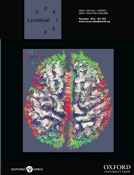
CEREBRAL CORTEX
Unveiling the mysteries of brain function.CEREBRAL CORTEX, published by Oxford University Press Inc, is a premier journal dedicated to advancing the field of neuroscience, specifically focusing on the cellular, molecular, and cognitive aspects of cortical structure and function. With an impressive impact factor that situates it in the top quartile (Q1) of its categories for 2023, this journal holds significant relevance for researchers and professionals interested in the latest discoveries and methodologies in both Cognitive Neuroscience (ranked #31 out of 115) and Cellular and Molecular Neuroscience (ranked #48 out of 97). Operating without an open access model, it ensures rigorous peer review and dissemination of high-quality research from across the globe. Since its inception in 1991, CEREBRAL CORTEX has established itself as a critical platform for educators and inventors, pushing the boundaries of knowledge in understanding brain function and its implications for behavior. Researchers and students alike will find this journal an invaluable resource for both foundational and cutting-edge studies in neuroscience.
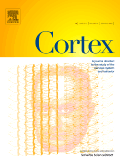
CORTEX
Illuminating the Complexities of the Human BrainCORTEX is a premier international journal published by Elsevier Masson, focusing on the cutting-edge areas of cognitive neuroscience, psychology, and neurology. With an impressive impact factor that places it in Q1 quartiles across multiple categories such as Cognitive Neuroscience and Neuropsychology, this journal serves as a vital resource for researchers, clinicians, and students alike. Established in 1964, CORTEX has continued to excel in disseminating high-quality scholarly work, offering insights that significantly enhance our understanding of the brain's functioning and behavior. Although not an open-access publication, it provides various access options to ensure the dissemination of knowledge is as wide-reaching as possible. As the field of cognitive psychology evolves, CORTEX remains at the forefront, fostering an environment for interdisciplinary collaboration and innovation. Researchers seeking to stay engaged with the latest advancements will find CORTEX an indispensable tool for their professional development.

Frontiers in Neuroinformatics
Exploring Innovations in Brain-Computer SynergyFrontiers in Neuroinformatics is a prestigious open-access journal published by FRONTIERS MEDIA SA in Switzerland, dedicated to advancing the interdisciplinary field of neuroinformatics. Since its inception in 2007, the journal has played a crucial role in facilitating knowledge exchange among researchers and professionals, exploring the intersection of neuroscience, biomedical engineering, and computer science applications. With an impressive Q2 ranking in both Biomedical Engineering and Computer Science Applications, and a Q3 ranking in Neuroscience, the journal consistently showcases cutting-edge research and innovations that push the boundaries of our understanding of the brain and its computational models. Positioned prominently within the Scopus rankings, with a rank of #15/49 in Neuroscience (miscellaneous) and a 70th percentile standing, Frontiers in Neuroinformatics is essential reading for anyone engaged in this dynamic field. Researchers, students, and practitioners are encouraged to contribute to and leverage this accessible platform to foster collaboration and drive scientific progress.
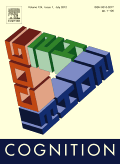
Cognition
Exploring the Depths of Human Thought and LanguageCognition, published by Elsevier, is a leading journal dedicated to the exploration and advancement of knowledge in the multifaceted fields of cognitive neuroscience, cognitive psychology, and linguistics. Since its inception in 1972, this prestigious journal has established itself as a prominent platform for disseminating innovative research and critical reviews, achieving a remarkable Q1 ranking across various relevant categories, including Cognitive Neuroscience and Developmental Psychology, as per the 2023 metrics. With a focus on providing insights that are vital for researchers, professionals, and students alike, Cognition boasts an impressive standing in the academic community, evidenced by its high Scopus rankings which place it in the top percentiles in several disciplines. Researchers interested in the cognitive processes underlying human thought, language, and behavior will find Cognition an invaluable resource that publishes cutting-edge findings and fosters interdisciplinary collaboration. Though it operates under a traditional access model, the breadth and depth of its content ensure it remains integral to advancing cognitive science.